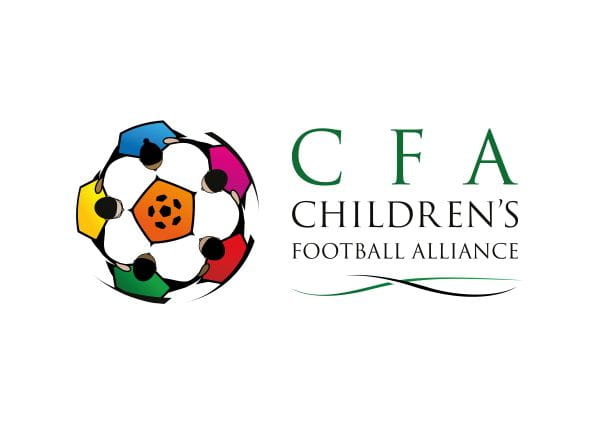
Your Kids ‘ Your Say ‘ and DAVE’S
The FA’s, Your Kids ‘ Your Say was attended by NCFA founder member and grassroots children’s special needs coach Dave Ramzan. Dave has been a parent volunteer coach for 8 years and has been proactive lobbying the FA to recognise the children’s game from the children’s perspective. Your Kids Your Say has been described by the FA as a ‘Travelling Road Show’?
Equipped with power point, audio-visuals and peppered with enough stats to confuse the average County FA Chairman and peppered with the odd celebrity ex-footballer the Road Show was a circus not to be missed said one FA insider. With all the good will in the world we packed Dave off to his beloved The Valley home of Charlton Athletic Football Club to sample the buffet and reflect on the vast expertise of knowledge provided by the Football Association, here’s Dave’s feedback.
On Wednesday 14th September I attended the FA’s seminar on youth football development proposals which the FA is intending to put into place starting in the 2013-14 season.
The main topics under discussion included:
- Overview – a child-centred approach
- An increase in small-sided football
- The introduction of 9 v 9
- Raising the age of “competitive” football
- Flexible formats & summer football
- Age groups and the Relative Age Effect in football
- Timetable for proposed changes
The FA’s proposals have apparently been formed through consultation with people involved in youth football and most importantly the children who play the game. The FA spoke with over 300 youth clubs, hundreds of grassroots coaches, over 150 youth leagues and 42 different groups of young footballers aged 8-12 from both professional and grassroots clubs.
The findings have formulated these new proposals to give children a better footballing experience than many who play feel they are having within the present youth football structure.
The first point made by the effervescent presenter Nick Levitt FA’s National Youth Development Manager Youth and Mini Soccer was that the competitive aspect of playing football would not be taken away by these ‘radical’ new ways of running youth football.
As these new plans were explained I had to smile to myself, as a majority of the findings made, from consultations with the children who play the game, mirrored those of Paul Cooper who was one of the main driving forces behind GUBOG, and those of the National Children’s Football Alliance formed as a charity to promote the voice of children in football. For those of you who may not know of GUBOG, which included many of the coaches I spoke with at the seminar, the initials stand for Give Us Back Our Game. The organisation promoted small sided games, where children played for fun and not for points and trophies, where they learned through experience and not by some coach bellowing at them to kick it long, or pass it quick. The games and coaching methods used in the planned games gave youngsters a chance to express themselves, without fear of making mistakes or taking risks, a theme which 10 years later now runs through the FA’s own plans to restructure youth football.
Many of the GUBOG themes also seemed to have been adopted by the FA, through consultation with the children who play the game.
These consultations made it clear that a majority of children just want to play for fun, and that football has become too adult centred, youth football should ensure that the players needs are met by having smaller goals and pitches appropriate to the players age, more use of use of 3G artificial pitches, less regulated pitch sizes where the pitches can become more adaptable, using cones or coloured lines instead of relying on standard pitches marked out in white lines, usually too big for younger players to play on. It was found that children adapt to playing on differing pitch sizes and would willingly play on a round pitch if they were told to, as they just wanted to get out and play football. Games should be child centred, playing league matches puts too much pressure on children at too young an age, by playing more friendlies and mini tournaments it takes away the pressure of children playing football for points.
Their research found a majority of players said they played for fun and trophies and winning leagues were not important, where adults interviewed saw winning trophies and playing in leagues as the most important aspect of youth football. Once again these findings reminded me of the GUBOG workshop I attended in Derbyshire some six years ago, where the coaching methods and matches played were centred on giving the children a fun football experience without the constant weekly pressure of playing to get their team further up the league table. The FA proposals will increase the use of small sided games for all age groups up to under 12’s, allowing them to progress gradually rather than jumping straight from mini-soccer to 11-a-side games at too young an age. Under 7s and under 8s will play 5v5, under 9s and under 10s will play 7v7, then 9v9 for under 11s and under 12s. Each age group will play on appropriate pitch sizes with smaller goals. The FA findings make it clear playing smaller sided games gives children more touches of the ball, more chances to score goals and more opportunities for players to have one-v-one encounters to attempt and improve dribbling skills, all aspects of the GUBOG way of playing football. The concept would also bring in a ruling that all of a team players, or squad, should be given a minimum of 50% playing time, taking away the often used sub, who sits on the bench for most of the game and is brought on to play the last five minutes. If each child in a team pays the same fees and club subs to play, they should also be able to play the same amount of time on the pitch as those more able player’s, which league football, playing for points and trophies prohibits, as it seems to be a win at all costs mentality. A majority of the FA’s new ideas for youth football mirror the way those who support GUBOG believed the game for children should be played, it is a pity that the FA did not take on board what the GUBOG Campaign was advocating some six years ago when I first encountered them.
I spoke with Sir Trevor Brooking on the night and asked if he knew of GUBOG and the ethos behind the way this organisation believed football should be played. Sir Trevor was aware of Paul Cooper and the work he had carried out, and I asked why it had taken the FA so long to come to the same conclusions as Paul Cooper and others at GUBOG, and the coaches who implemented these ideas at their own clubs, and who had been telling the FA for a long time their football methods and youth football structure was not the way forward. It seems that the FA needed to find this out for themselves by forming their own internal organisation ‘Your Kids Your Say’ to ensure it was seen as their own way forward in children’s football development, perhaps a lot of funds spent by the FA on this youth development review would have been better spent on employing legitimate experienced grassroots practitioners like Paul Cooper?
The whole youth grassroots league structure will be looked at with a view to breaking the season up rather than having a whole football season playing continuous league matches one after another, as the strongest clubs always go to the top of the league where they remain for the whole of the season, and teams in mid table and towards the bottom of the league seemed to be playing catch up, or were there just to make up the league numbers. Clubs should focus on development of players not on just getting to the top of their respective leagues, a majority of children join clubs to play football, make friends, and enjoy themselves, they shouldn’t be concerned about league positions, how many points they have or if they are going to finish bottom.
At the end of this seminar there was a Q&A, and I was surprised to find several coaches not in agreement with the new FA proposals, believing that the competitive element of football would be taken away, even though it was made clear at the beginning of the seminar that these proposals would keep and improve the competitive element in football. It seemed that these coaches can’t distinguish what competitive football is actually all about whether playing 1v1, 3v3, or 4v5 in a fun tournament or 7v7, 11v11 in a league structure! Their idea of competition was about winning games, gaining points and winning trophies. The coach made the point that Sir Trevor Brooking learned his football on the streets and didn’t have to play under these type of new FA proposals for grassroots football, which defeated his own argument for maintaining strict league football formats, because children are no longer able to play with freedom on the streets or in the parks, as children’s football has been taken over by the adults, and these new FA proposals, if put into place correctly, will bring back the way children played just for the fun of it. The coach himself admitted he had been labelled a dinosaur by another coach at the seminar, and there were many other coaches there who agreed that he was. One committee member of a grassroots local football league also could not see the benefits of changing the structure of children’s seasonal football, which would give more children more opportunities to play for enjoyment rather that for points, and I think that the FA will have a hard task on their hands getting some of these well established youth football leagues to bring this new FA youth football structure into force.
On my part I work with children and young adults with special educational needs and disabilities, where we already play in a similar format to these new FA proposals, and have been doing so using many of GUBOG’s football games and coaching activities, even so we also have to abide by some of the FA’s outdated and unrealistic rules and regulations so our players can actually play matches and games. However I believe that these new FA proposals are heading in the right direction, giving clubs, teams and players more flexibility and freedom to play the game. If in the process this improves a player’s overall footballing ability, which results in the discovery of a new Bobby Charlton, Geoff Hurst, Wayne Rooney or even a Sir Trevor Brooking, then this would be a fantastic achievement for a grassroots football club, however we must remember a majority of children who play the game will only ever play just for the fun of it.
You can find out more about the FA’s Your Kids Your Say on http://www.clubnewsletter.co.uk/2011/feb/faproposals.html#overview
NCFA supports the FA in carrying out this work and would like the opportunity to work closer in future on similar projects. It is clear that the great work grassroots volunteers do throughout football is finally being referred to by the custodians of the professional game. However, it is clearly a game that needs an independent voice for children as more and more issues relating to their game on not on the FA’s radar. Unfortunately, the children’s structured game in the mainstream remains governed in a manner mimicking the professional game’s attitudes, conflicts of interests, capital investments, branding, consumer markets and complex agendas. These ingredients impinge upon the game far too early and should be kept out of reach of childhood.
